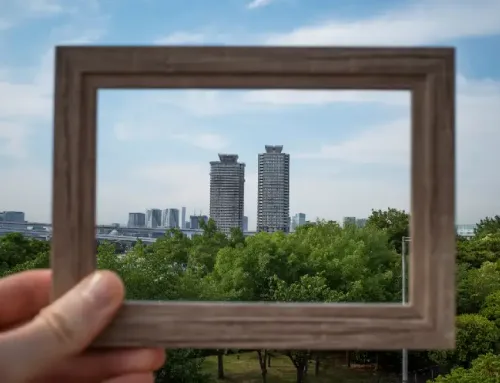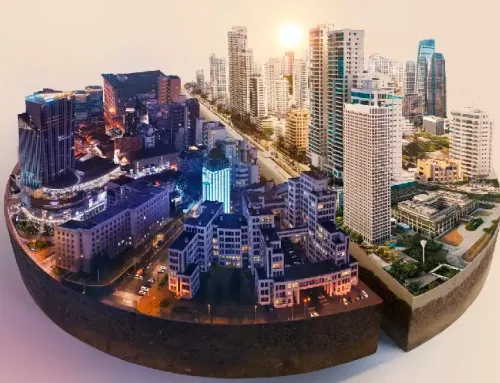Abu Dhabi stands as a testament to ambition and vision, symbolic of modern progress. Yet, beyond its skyline and prominent landmarks lies an integral, albeit less glamorous, component: the labour camps in Abu Dhabi. These camps, essential cogs in the vast machinery that drives the city’s development, often go unnoticed in the grand narrative. By delving into this topic, we aim to present a comprehensive understanding of Abu Dhabi, extending beyond the superficial. The objective here is to encompass the entirety of the city’s socio-economic landscape and highlight the interdependence between its booming sectors and the labour camps that facilitate them. This overview will navigate historical backdrops, demographic shifts, and current scenarios to offer a holistic view of these camps’ role in shaping Abu Dhabi’s present and future.
Historical Context
During the initial developmental phases of Abu Dhabi, labour camps were foundational elements established to accommodate the burgeoning workforce. As the years passed, these camps evolved from rudimentary shelters into organised accommodations, reflecting the city’s broader transformation. What catalysed this shift towards more structured conditions? A significant influence was the government’s intervention, introducing the General Standards Manual for Group Labour Accommodation in 2009 to standardise and uplift the living standards within these camps. These regulations addressed basic amenities and ensured that the rights and well-being of the residents were safeguarded. By setting clear standards and periodic evaluations, the government has underscored its commitment to ensuring that labour camps align with Abu Dhabi’s overarching vision of progress and human welfare.
Demographics and Population
The composition of Abu Dhabi’s labour camps is truly a patchwork of global faces. From South Asia to Africa, you’ll find folks chasing the Gulf dream, drawn to the promise of steady work. But it’s not just about jobs. The world is an ever-changing place, and shifts in economies, political landscapes, or even major events can sway where people choose to seek work. But here’s the catch: with such a varied crowd, it’s not a walk in the park to manage these camps. Each group brings its own set of customs, expectations, and needs. Think about the range of dietary needs, religious practices, and even linguistic barriers. Then, there are social dynamics and the potential for cultural misunderstandings or conflicts. Finding common ground and ensuring mutual respect among such varied groups is not just challenging but essential for harmony within the camps.
Living Conditions and Facilities
Staff and labour accommodation in Abu Dhabi presents a spectrum of living conditions. On one end, there are well-maintained accommodations offering the basics and perhaps a bit more. However, on the flip side, some facilities leave much to be desired. The emphasis on sanitation and hygiene has intensified in recent times, especially with global health concerns pushing hygiene to the forefront. While healthcare services are being ramped up in many of these camps, access to education for residents and their families is still finding its footing. And when it comes to unwinding after a hard day’s work, recreational facilities and social spaces are gradually making their way into these accommodations, but there’s definitely room for enhancement in that department.
Working Conditions and Employment
Abu Dhabi’s ambitious projects, from its iconic skyscrapers to expansive road networks, owe much to the vast workforce that stems from labour camps. Key sectors leveraging this manpower include construction, infrastructure development, and services like hospitality and maintenance. However, while these sectors thrive, challenges persist. Extended working hours under the scorching sun, especially in construction, can be gruelling. Though many employers ensure timely payment, there have been instances where delays or disparities in remuneration raise concerns. While the UAE has stringent labour laws on paper, their consistent implementation across the board is crucial. The silver lining is the increasing attention towards occupational health and safety. With rising temperatures, proper work breaks, hydration, and safety gear are becoming more standardised. Still, continuous efforts are needed to ensure that every worker benefits from these protective measures.
Social and Psychological Impact
Life within the confines of labour camps in Abu Dhabi presents its unique emotional challenges. The psychological well-being of residents is often tested, given the extended periods away from loved ones and familiar environments. This separation, combined with the daily grind, can lead to feelings of social isolation, even amidst the bustling community of the camps. While many find comfort in the camaraderie of fellow residents, navigating the diverse cultural and social dynamics is its own challenge. Amidst these challenges, the resilience of the residents shines through. Some form tight-knit groups, drawing support and strength from shared experiences. Others, finding solace in personal pursuits or keeping their eyes on future goals, push through with determination, showcasing the human spirit’s incredible capacity to adapt and persevere.
Human Rights and Legal Considerations
Navigating the complex terrain of labour rights in Abu Dhabi has been a journey with its fair share of challenges. Incidences of human rights violations, including withheld wages or substandard living conditions, have unfortunately marred the landscape at times. However, the Emirate has been proactive in establishing a robust legal framework. Comprehensive labour laws have been rolled out to protect workers’ rights and ensure fair treatment. Yet, the real challenge lies in effectively enforcing these regulations, ensuring they’re more than just words on paper. In recent times, concerted efforts, both from the government and civil society, have aimed to address these gaps, striving for a system where every worker’s rights are recognised and uncompromisingly upheld.
Government Initiatives and Reforms
The Abu Dhabi government has certainly taken steps in the right direction. One notable move was rolling out the “General Standards Manual for Group Labour Accommodation” in 2009, aiming to create a more uniform and better living standard in these camps. They also introduced a clever tactic: a reward programme for landlords and companies. This incentive encourages them to provide quality accommodation and keep a clean sheet in Occupational Health and Safety. Teaming up with international organisations, the government is also looking outside its borders for best practices. While there’s always room to fine-tune, it’s clear they’re committed to making a positive change for those in labour accommodations.
Community and NGO Involvement
NGOs and local communities have played a pivotal role in amplifying the needs and concerns of those residing in labour camps. Non-governmental organisations, in particular, have often been at the forefront, advocating for improved conditions and rights. A shining example is SmartLife. Established in 2009, this organisation has been a beacon of hope, tirelessly striving to uplift the lives of blue-collar workers in the UAE. Their approach is both collaborative and comprehensive, partnering with government entities, business school alumni, and leaders from various sectors, including finance, advertising, FMCG, and GIS. Community engagement initiatives have bolstered these efforts on the grassroots level, fostering a sense of unity and shared responsibility. Through a tapestry of success stories, the persistent dedication of these organisations becomes evident. But it’s not all smooth sailing. NGOs often grapple with limited funding, bureaucratic hurdles, and, sometimes, the sheer magnitude of the challenges they’re looking to address. For instance, while they may succeed in one camp, conditions in another might remain unchanged, requiring a renewed approach. Such roadblocks, though daunting, haven’t deterred these organisations. They adapt, learn, and push forward, fueled by the belief that every worker deserves a dignified living.
Future Outlook and Recommendations
When charting the course for the future of labour camps in Abu Dhabi, it’s evident that while strides have been made, the path forward requires continuous innovation and commitment. Foreseeable changes and developments might include advanced infrastructural upgrades bolstered by technological integrations, making the camps more sustainable and resident-friendly. A tangible recommendation centres on training and development programs for employees. By investing in their skills and well-being, not only do we enhance their professional prospects but also enrich their personal lives. Moreover, an essential aspect that can’t be overstated is engaging directly with the residents. Their firsthand experiences offer invaluable insights, which, when heeded, can lead to more holistic and effective solutions. In conclusion, the quest to uplift the quality of life within Abu Dhabi’s labour camps is a collective one, and every initiative, every voice, and every effort holds significance in this endeavour.





